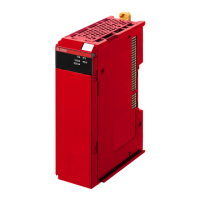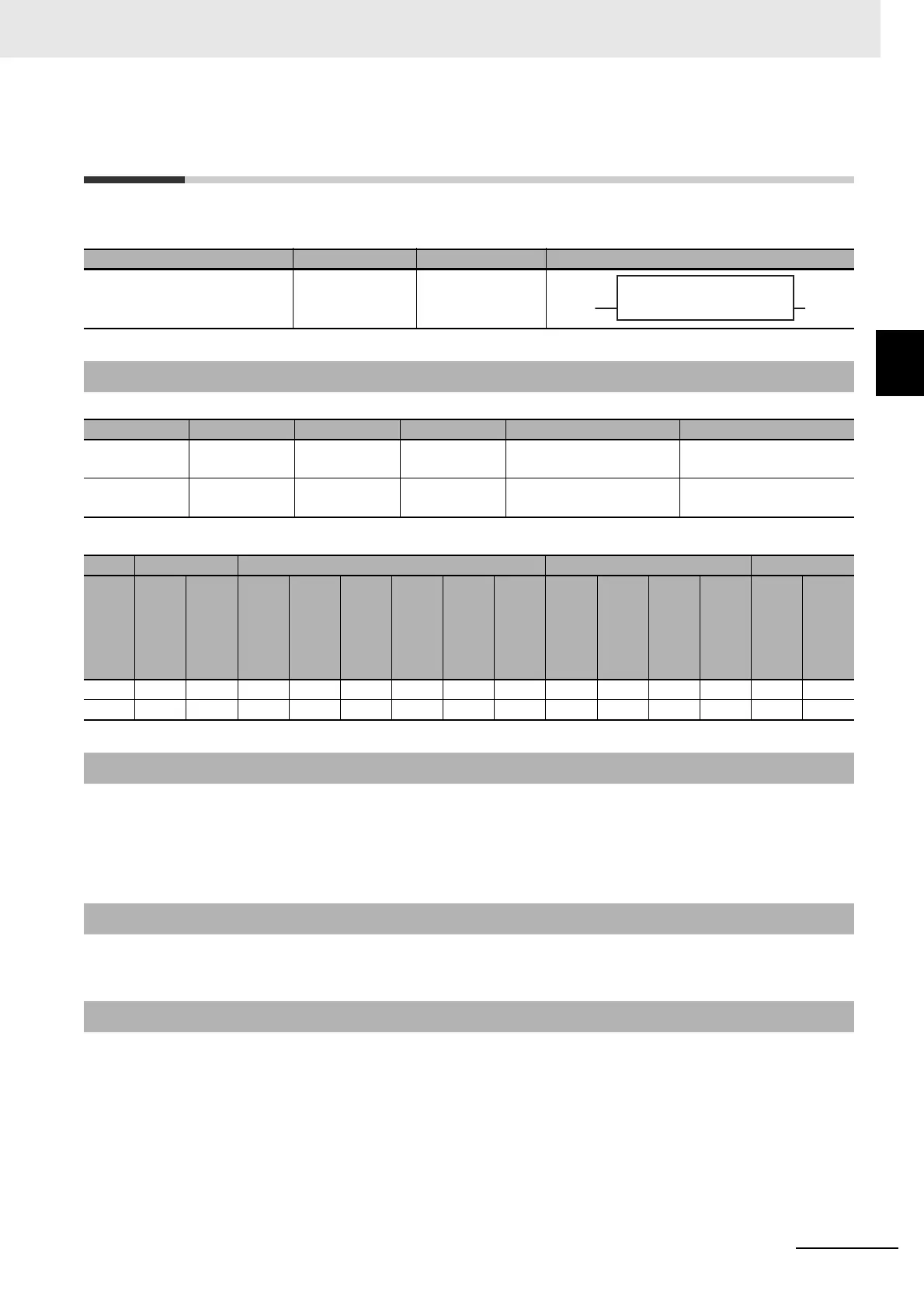2 - 13
2 Standard Functions
NX-series Safety Control Unit Instructions Reference Manual (Z931)
Data Type Conversion Instructions
2
BOOL_TO_DINT
BOOL_TO_DINT
This function converts a BOOL variable to a DINT variable.
If you omit an input or output parameter, a building error will occur.
This function converts BOOL data In to DINT data Out.
If the value of In is FALSE, the value of Out is DINT#0.
If the value of In is TRUE, the value of Out is DINT#1.
To check for DINT data, refer to DINT_TO_BOOL.
• The input condition depends on whether the output is safety data or standard data. If the condition is
not met, a building error will occur.
• If you set a safety data type variable for the output terminal, set a safety data type variable for the
input terminal as well.
• If you set a standard data type variable for the output terminal, you can set either a safety data type
variable or a standard data type variable for the input terminal.
Instruction Name FB/FUN Graphic expression
BOOL_TO_DINT Convert BOOL to
DINT
FUN
Variables
Name I/O Description Valid range Default
In Data to con-
vert
Input Data to con-
vert
TRUE or FALSE FALSE
Out Conversion
result
Output Conversion
result
DINT#0 or DINT#1 DINT#0
Boolean Bit strings Integers Durations
BOOL
SAFEBOOL
BYTE
SAFEBYTE
WORD
SAFEWORD
DWORD
SAFEDWORD
INT
SAFEINT
DINT
SAFEDINT
TIME
SAFETIME
In OK OK
Out OK OK
Function
Additional Information
Precautions for Correct Use
BOOL_TO_DINT

